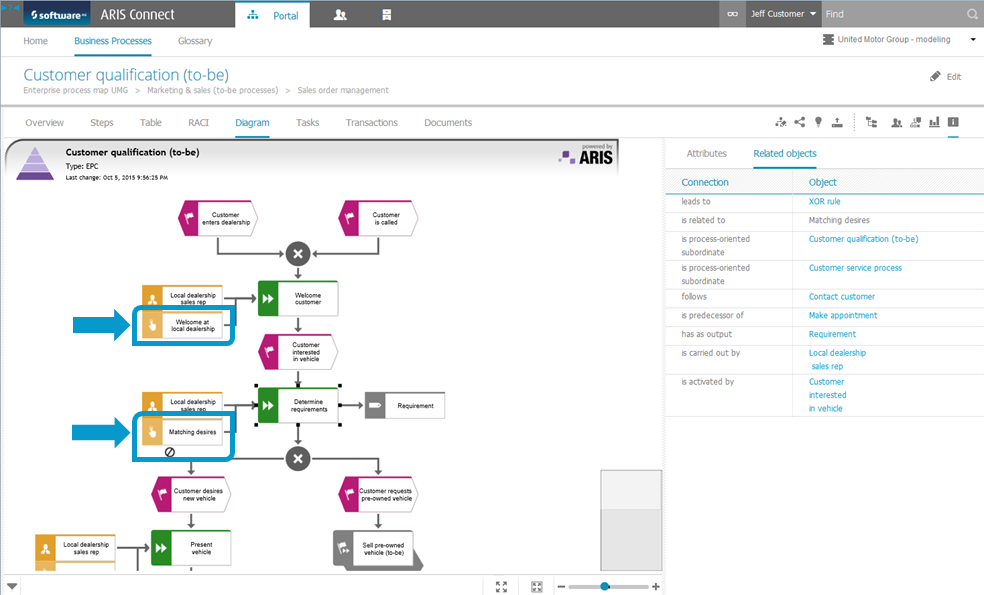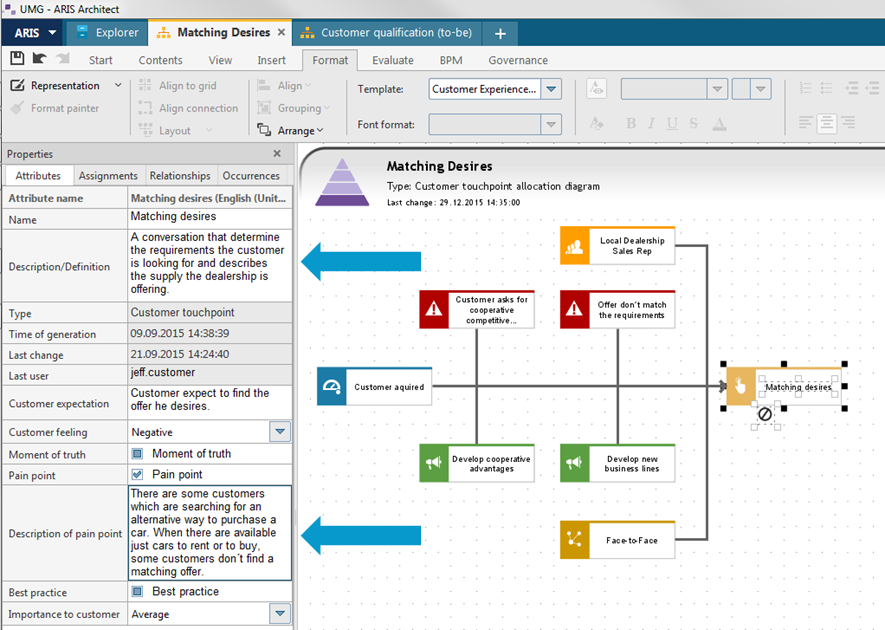In our previous blog-post series on customer experience management with ARIS, we described the ways to creating a good customer experience with a top-down approach. Now we want to illustrate how to improve your customer experience bottom-up, beginning with your existing business processes and how to set these internal processes in relation with the outside-in perspective.
The first step is to identify the customer touchpoints within your business process. Just as a customer touchpoint refers to a customer journey step, it refers to a process step within your internal process.
There will of course be business processes without any customer touchpoint such as taxation or internal ERP processes, but there are processes where diverse touchpoints can occur at single process steps as well. It is therefore important to find and identify these activities which have customer touchpoints related to them.
In a second step you may analyze every touchpoint in more detail in a customer touchpoint allocation diagram. Depending on touchpoint and importance for the end-to-end journey, it is advisable to use customer reviews, and customer surveys to evaluate the touchpoint. Define corresponding communication channels, risks and initiatives, KPIs and touchpoint ownership. Furthermore there may be output or input data that are important. The main goal should be to specify every customer touchpoint as exact as possible since this will help to counteract or even prevent pain points.
Last but not least you need to consider how the customer touchpoint is connected to the customer journey and specify it on attribute level. This will help you to decide how important it may be for the customer, what the customer feels and expects from the interaction and which goal the customer has at a specific moment.
Compare the as is journey with the to-be journey to identify bottlenecks and innovate improvements. According to the results you can initiate and make minor changes, redesign the complete process or extend your business to improve it.
In the next blog-post, my colleague Eva Klein will show you how to analyze your customer experience and customer touchpoints from an internal starting point.



